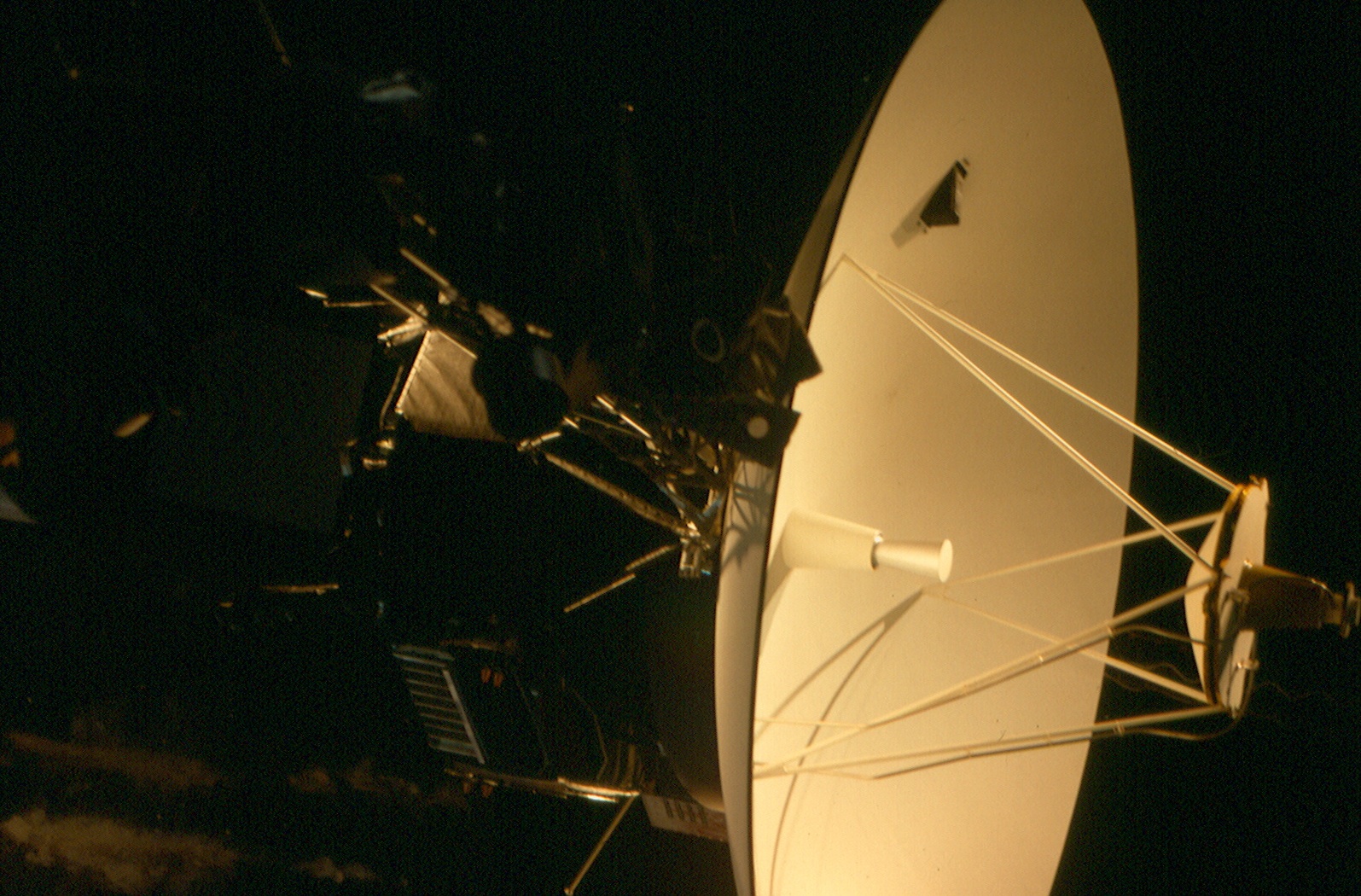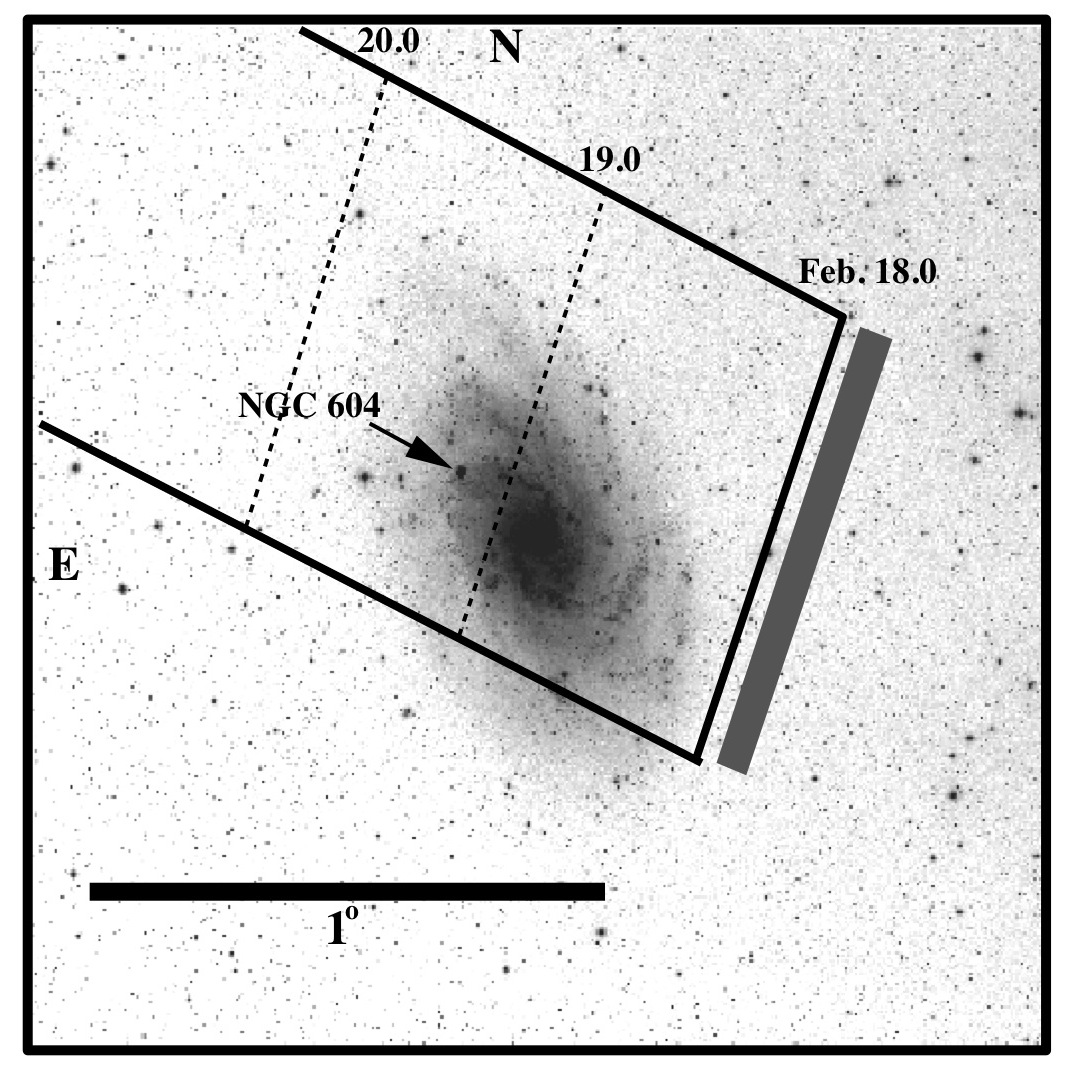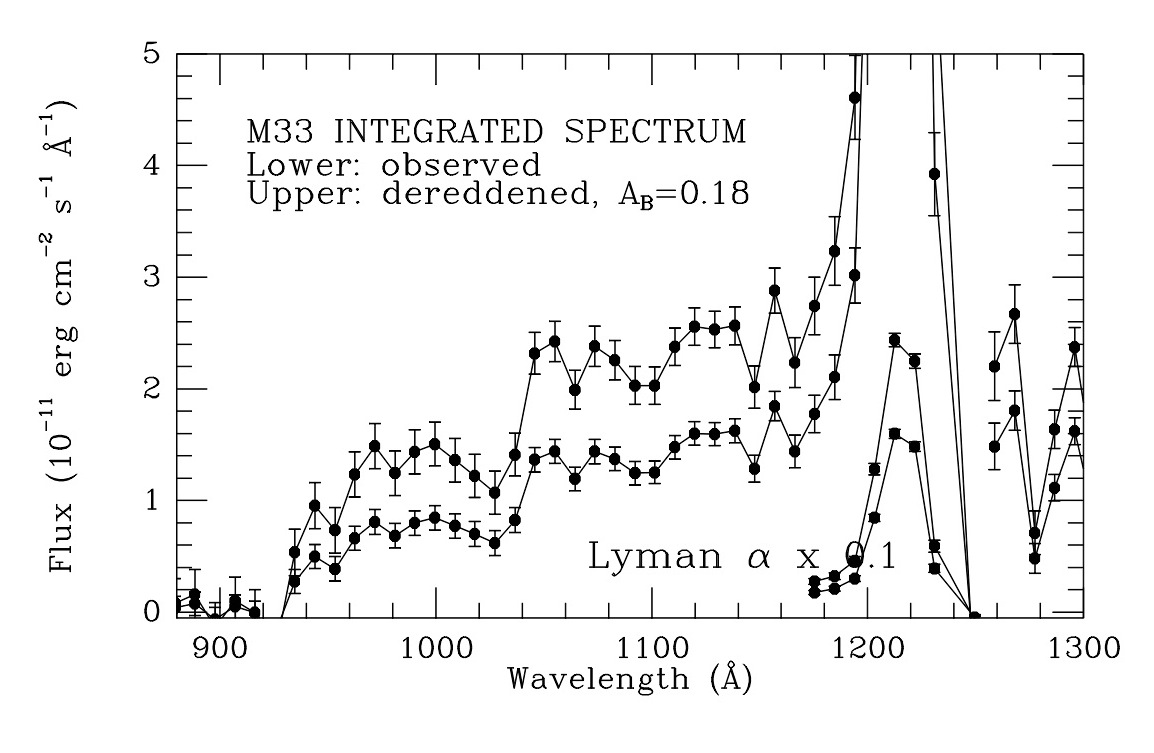

The Voyagers are of course best known for their epic exploration of the outer Solar System (still continuing after 37 years by now). Less known is the fact that their UV spectrometers (UVS) were for some years the only available way of probing the far-ultraviolet radiation from deep-sky sources as well (below about 1150 Angstroms). Each UVS observed a slice of sky about 0.1 by 0.9 degrees at once, with the field defined by mechanical collimation (and no telescope as such, to avoid substantial reflection losses; I am not at all flustered by including this instrument in a telescope list...). They were used to observe hot stars, quasars, and galaxies; the spacecraft could spend a long time on such observations in interplanetary cruise, so multi-day exposures were routine.
Here is a Voyager 2 observation of the nearby star-forming spiral galaxy M33, obtained around the time it crossed the orbit of Mars (the results would have been more notable had I thought to find the data and publish them sooner than 20 years from photon arrival).


The spectrum shows Lyman α emission, with a substantial correction for solar radiation backscattered from the heliopause region, and a blend of absorption features near 1030 Angstroms. There is enough spatial resolution in the scan to show that the stellar population in the gigantic star-forming region NGC 604 is hotter in the far-UV than the average for M33, something we examined in more detail using FUSE.
Last changes: 9/2014 © 2014